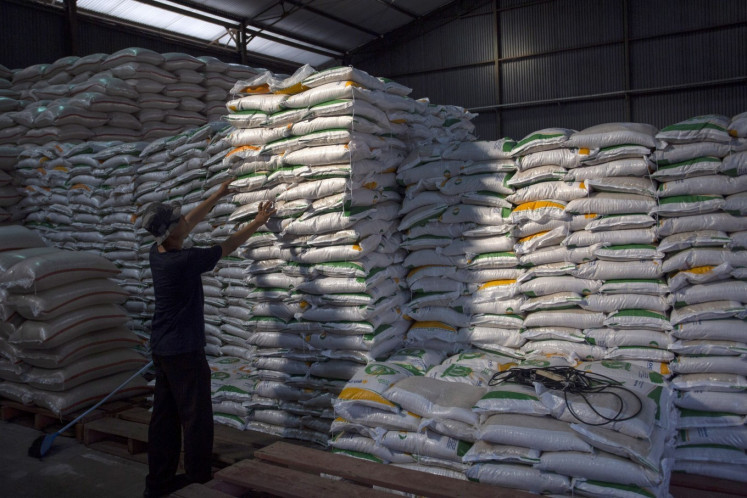Popular Reads
Top Results
Can't find what you're looking for?
View all search resultsPopular Reads
Top Results
Can't find what you're looking for?
View all search resultsLetters: Culture belongs to the people
It was interesting to read "Let Malaysians advertise Pendet and wayang" (The Jakarta Post, Aug
Change text size
Gift Premium Articles
to Anyone
It was interesting to read "Let Malaysians advertise Pendet and wayang" (The Jakarta Post, Aug. 27)
Thank you for sharing such a mature view of the situation, one which I personally feel was, in the end, "much ado about nothing"! There appears to be a misconception as to who owns culture.
My opinion is that culture belongs to the people. "Culture" describes the many ways in which human beings express themselves for the purposes of uniting with others, forming groups and defining an identity. Very often "culture" is spread by colonialism, by conquest, by migration, by religious propagation and so on. What is Malaysian culture? What is Indonesian culture?
It is what the people have created or adopted as their own. A key example of culture in Indonesia and Malaysia is the language now identified as Bahasa Indonesia and Bahasa Malaysia, which was originally spoken in Riau. In fact, Riau Malay is regarded as the purest form of the Malay language and the Malay spoken in Riau is very similar to Bahasa Malaysia.
There was some discussion with regards to the song "Rasa Sa-yange" almost two years ago. No doubt it originated from Indonesia but I recall my grandmother singing it to me some 50 years ago. Even sate, which Indonesia, Malaysia and Thailand all lay claim to, was originally developed from the Indian kebab brought by Muslim traders.
Malaysians are proud of the fact that Malaysia is truly a microcosm of all of Asia, a claim that we make because of the many different peoples who have settled in our country from all over Asia bringing their culture with them in the form of cuisines, languages, dances, songs and even norms and beliefs. Likewise, Indonesia is a microcosm of different civilizations, and has adopted the Ramayana and Mahabarata together with Siam (Thailand), Cambodia and many other parts of the world. And even wayang made its way to find a home in Malaysia, originating from Siam (although some say it came from Java).
The angklung, of course came from Java, but is now commonly found in the Philippines, Thailand and Malaysia. (I understand that today the bagpipes are known to be ethnic to Scotland, but actually they were popular in several other parts of the world before they became part of Scottish culture.) Batik is said to be an ancient art, handed down for thousands of years, widespread in the Middle East, Africa, Indonesia, Malaysia, China, Thailand, the Philippines, India and elsewhere (even Birmingham in the UK!).
Malaysian batik is distinctively different from Indonesian batik, and is famous for its geometric designs, such as spirals - clearly different from the Javanese tradition of hand-painted batik. The Kuda Kepang is a dance form that was first introduced to Johor in the southern part of the Malaysian peninsula in the early 20th century, by Javanese immigrants.
The captivating Tari Piring and the upbeat Tari Randai are today very much a part of the culture of Negeri Sembilan (where I have my roots), having been brought to Negeri Sembilan more than 3 centuries ago by immigrants from West Sumatra. Indonesia's Kecak dance (Bali), as we know it today, was a creation of German painter and musician, Walter Spies, who took a ritual trance dance and turned it into a dance-drama, based on the Hindu Ramayana, for presentation to Western tourist audiences.
Thaipusam, a Hindu festival mostly celebrated by the Tamil community in India, Malaysia, Singapore and South India, is celebrated at the world-renowned Batu Caves in Malaysia, with millions coming to watch the spectacle every year. The Hungry Ghost Festival is an event in Penang where the Chinese celebrate to remember their dead family members and pay tribute to them.
The belief and tradition was brought from ancient China by traders and other settlers from China. So today, sate is a part of Malaysian culture, as much as the Ramayana is part of Indonesian culture, the angklung is part of Filipino culture and batik is part of African culture!
As Mahatma Gandhi said, "No culture can live, if it attempts to be exclusive."
Tunku Iskandar
Kuala Lumpur










